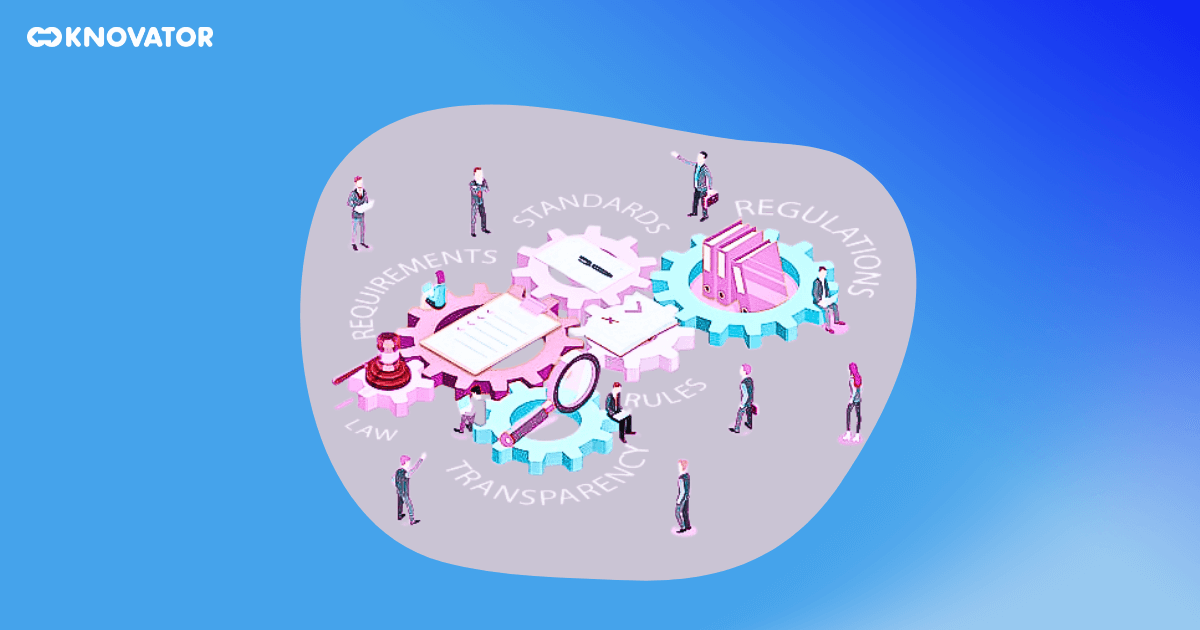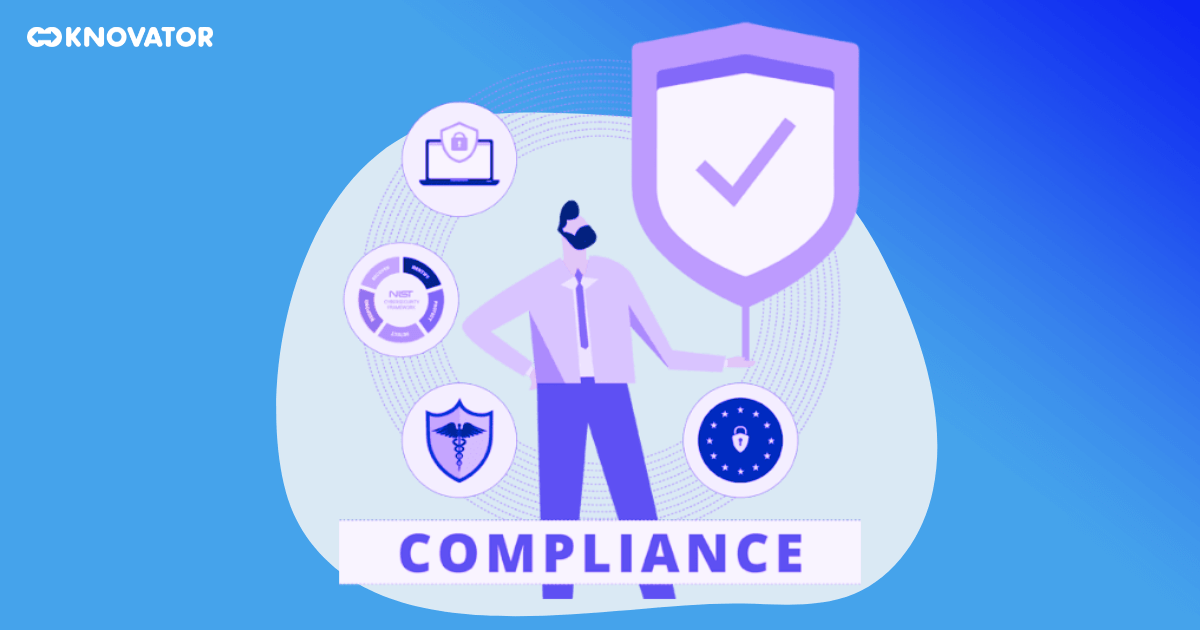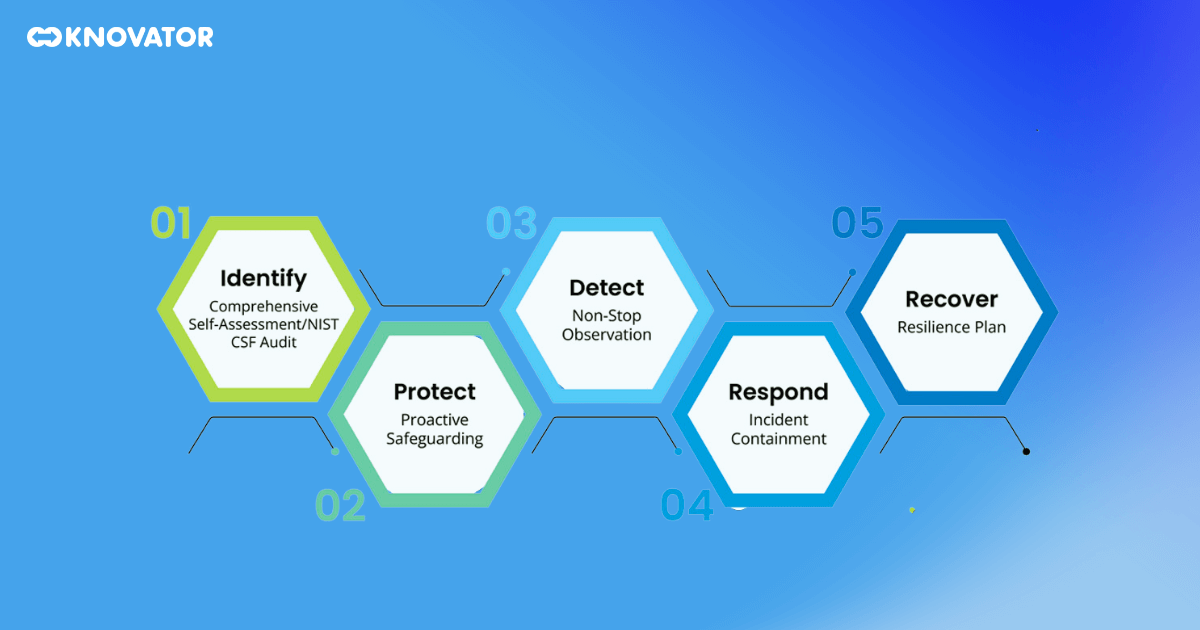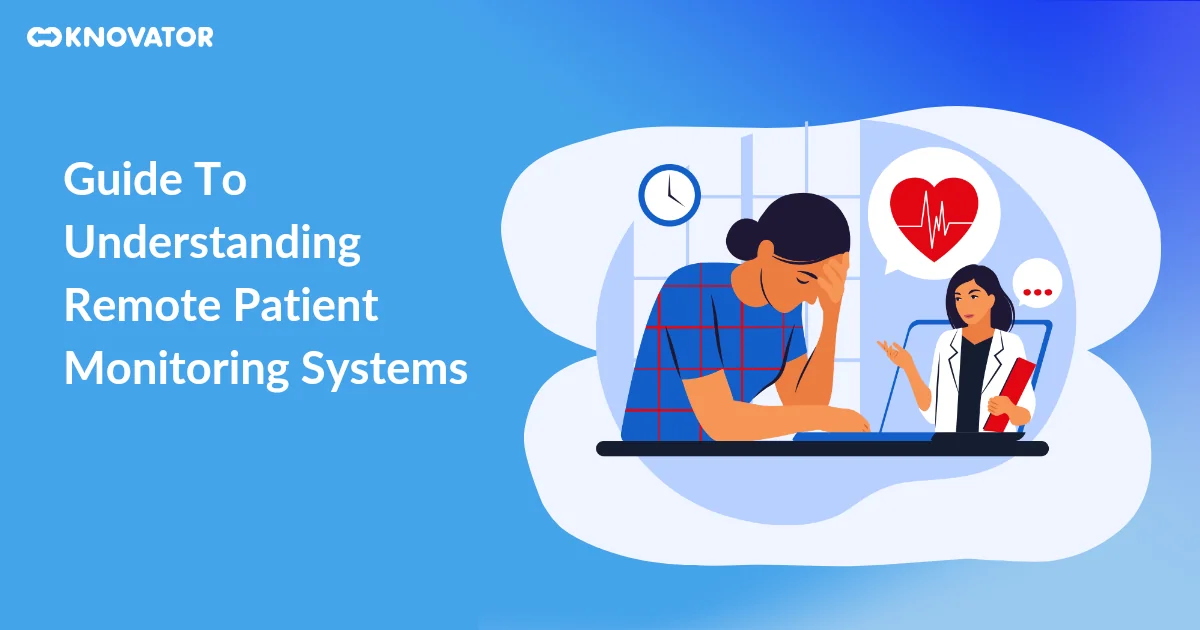Cybersecurity has become a top priority for businesses worldwide in the rapidly evolving digital landscape. One framework that has gained significant attention in this regard is the NIST Compliance Framework. This comprehensive guide aims to dive deep into the NIST Compliance Framework, its importance, and how businesses can implement it effectively.
We’ll start by understanding the NIST Compliance Framework and why it’s crucial in today’s digital world. We’ll then delve into who should be concerned with this framework and discuss its key components. We’ll also guide you through the steps to implement the NIST Compliance Framework in your organization and share some real-world examples of its implementation.
Further, we’ll discuss how to maintain compliance with the framework and explore the importance of the People Also Ask (PAA) section and keyword research in enhancing your understanding of the topic. Lastly, we’ll emphasize the importance of continuous improvement and feedback in maintaining and enhancing the NIST Compliance Framework.
Whether you’re a business owner, a cybersecurity professional, or someone interested in understanding the NIST Compliance Framework, this guide provides a comprehensive overview. Let’s dive in!
Understanding the NIST Compliance Framework
 The NIST Compliance Framework, or the NIST Cybersecurity Framework, refers to guidelines developed by the National Institute of Standards and Technology (NIST). It’s designed to help organizations manage and reduce cybersecurity risk. The framework is voluntary and provides a common language to understand, manage, and express cybersecurity risk internally and externally.
The NIST Compliance Framework, or the NIST Cybersecurity Framework, refers to guidelines developed by the National Institute of Standards and Technology (NIST). It’s designed to help organizations manage and reduce cybersecurity risk. The framework is voluntary and provides a common language to understand, manage, and express cybersecurity risk internally and externally.
It comprises three main components: the Core, the Tiers, and the Profiles. The Core presents industry standards, practices, and guidelines that enable communication of cybersecurity activities and results across the organization, from the executive to the implementation/operations level. The Tiers offer a process for organizations to view and understand the attributes of their approach to managing cybersecurity risk. The Profiles are a tool that can help organizations establish a roadmap for reducing cybersecurity risk, stay aligned with organizational and sector goals, consider legal or regulatory requirements and industry best practices, and reflect priorities of risk management.
Who Should Be Concerned with NIST Compliance Framework?
 Any organization that values the security of its information systems should be concerned with the NIST Compliance Framework. This includes businesses of all sizes across all industries, especially those in the healthcare, financial services, and public sectors.
Any organization that values the security of its information systems should be concerned with the NIST Compliance Framework. This includes businesses of all sizes across all industries, especially those in the healthcare, financial services, and public sectors.
The framework is particularly relevant for organizations that handle sensitive customer data, providing a structured approach to managing cybersecurity risks. Non-compliance doesn’t necessarily result in legal penalties, as the framework is voluntary.
However, failure to implement a robust cybersecurity strategy can lead to significant business risks, including financial loss, damage to reputation, and losing customer trust. In some cases, regulatory bodies may require evidence of a cybersecurity strategy, in which case the NIST framework could serve as a useful benchmark.
Key Components of the NIST Compliance Framework
 The NIST Compliance Framework is built around five core functions:
The NIST Compliance Framework is built around five core functions:
- Identify
- Protect
- Detect
- Respond
- Recover
The functions provide a top-notch, strategic view of an organization’s cybersecurity risk management. The Identify function assists in developing an understanding to handle cybersecurity risks to systems, people, assets, data, and capabilities. The Protect function provides appropriate safeguards to ensure the delivery of critical infrastructure services. The Detect function outlines the appropriate activities to identify the occurrence of a cybersecurity event. The Respond function includes appropriate activities to take action regarding a detected cybersecurity incident. Lastly, the Recover function identifies appropriate activities to uphold plans for resilience and restoring capabilities/services that got affected due to a cybersecurity incident. Each function is further divided into categories and subcategories, which detail specific outcomes of the activities performed.
Implementing the NIST Compliance Framework
 Implementing the NIST Compliance Framework is a strategic move that can significantly enhance an organization’s cybersecurity posture. The process comprises three main tenets: Profiles, Implementation Tiers, and the Framework Core functions.
Implementing the NIST Compliance Framework is a strategic move that can significantly enhance an organization’s cybersecurity posture. The process comprises three main tenets: Profiles, Implementation Tiers, and the Framework Core functions.
The first step involves establishing goals that align with the organization’s risk management and cybersecurity objectives. This is followed by creating a detailed profile that outlines the organization’s current cybersecurity activities, desired outcomes, and the resources required to achieve these outcomes.
Next, the organization needs to assess its current position in terms of cybersecurity. This involves identifying any gaps between the existing profile and the target profile. Once these gaps are identified, the organization can develop a prioritized action plan to address them3.
The NIST Compliance Framework is renowned for its flexibility and open-mindedness, allowing it to be tailored to each organization’s specific requirements and circumstances. This makes it a handy tool for businesses of all sizes and sectors.
In conclusion, implementing the NIST Compliance Framework is a multi-step process that requires careful planning, assessment, and continuous improvement. However, the benefits in terms of enhanced cybersecurity and risk management make it a worthwhile investment.
Also Read : Top Telehealth Business Ideas
Case Studies of NIST Compliance Framework Implementation
The NIST Compliance Framework is not just a theoretical concept; it’s a practical tool many organizations have successfully implemented. Let’s look at some real-world examples.
First, we have the case of a large financial institution that adopted the NIST Framework to enhance its cybersecurity posture. The organization used the Framework to identify gaps in its current cybersecurity practices and develop a roadmap for improvement. As a result, it significantly reduced its risk of cyber threats and improved its response to potential incidents.
Another example is a healthcare provider that used the NIST Framework to protect sensitive patient data. The organization implemented robust security controls and procedures, ensuring the confidentiality, integrity, and accessibility of patient information. This helped the provider comply with regulatory requirements and increased patient trust.
These case studies demonstrate the versatility and effectiveness of the NIST Compliance Framework. Whether a small business or a large corporation, the Framework can help you improve your cybersecurity practices and protect your valuable assets.
Maintaining Compliance with the NIST Framework
 Maintaining compliance with the NIST Framework is an ongoing process. It involves regularly reviewing and updating your cybersecurity practices to address new threats and vulnerabilities. This includes conducting regular audits and assessments to ensure your security controls are effective and up-to-date.
Maintaining compliance with the NIST Framework is an ongoing process. It involves regularly reviewing and updating your cybersecurity practices to address new threats and vulnerabilities. This includes conducting regular audits and assessments to ensure your security controls are effective and up-to-date.
One of the key aspects of maintaining compliance is continuous monitoring. This involves tracking and analyzing your organization’s cybersecurity performance over time. Doing so lets you identify trends, detect anomalies, and make informed decisions about your cybersecurity strategy.
Another important aspect is training and awareness. Your employees play a crucial role in maintaining cybersecurity, so providing them with the knowledge and skills they need to protect your organization is important.
Remember, compliance is not a one-time event but a continuous journey. You can ensure your organization remains protected and compliant by staying vigilant and proactive.











